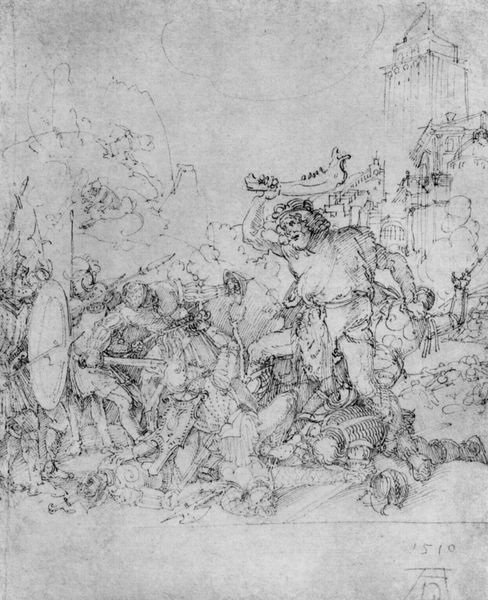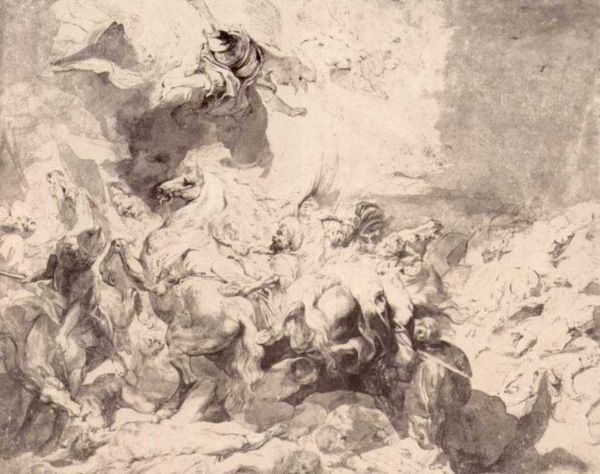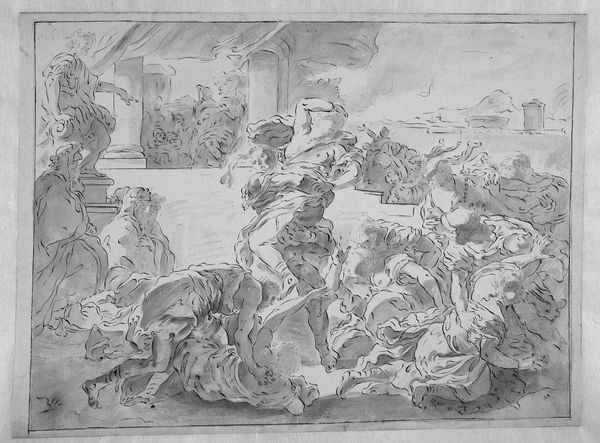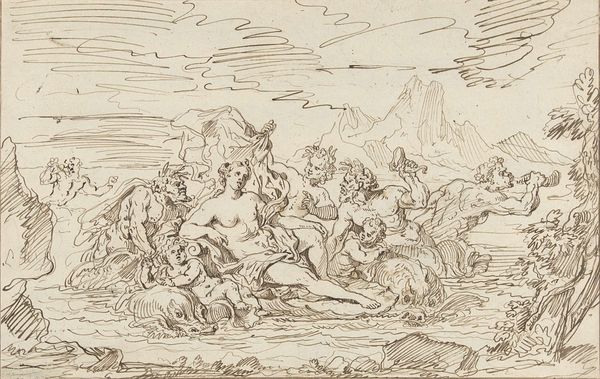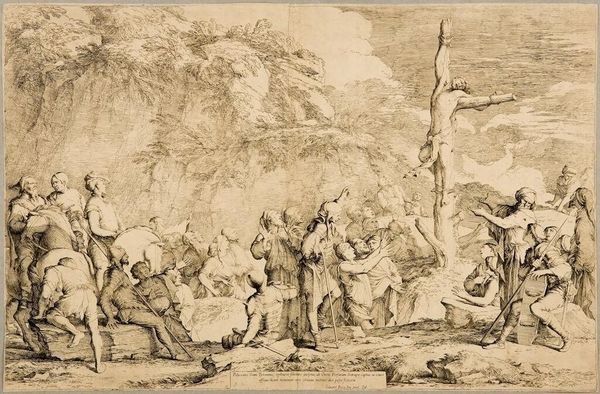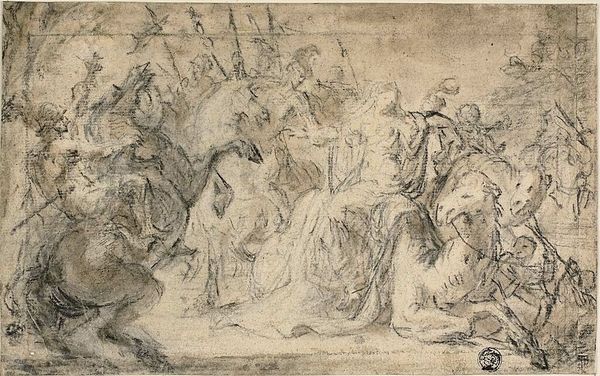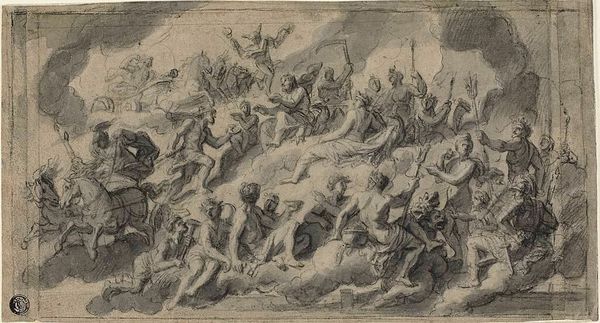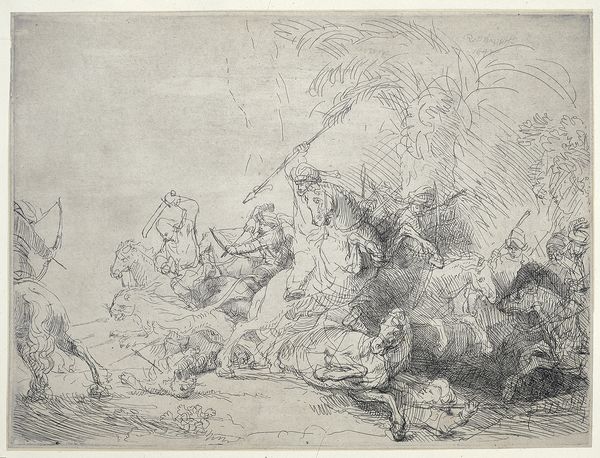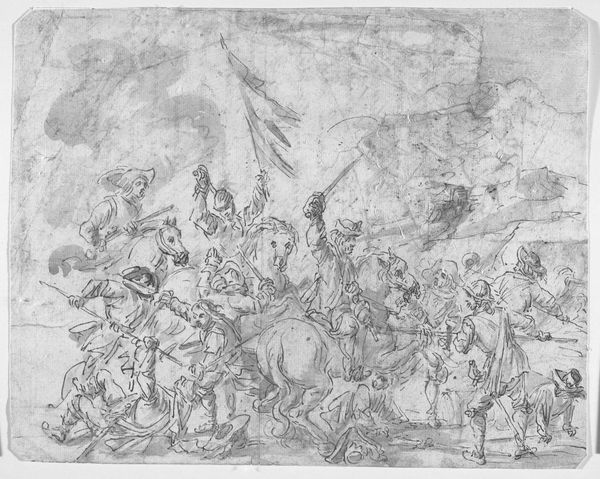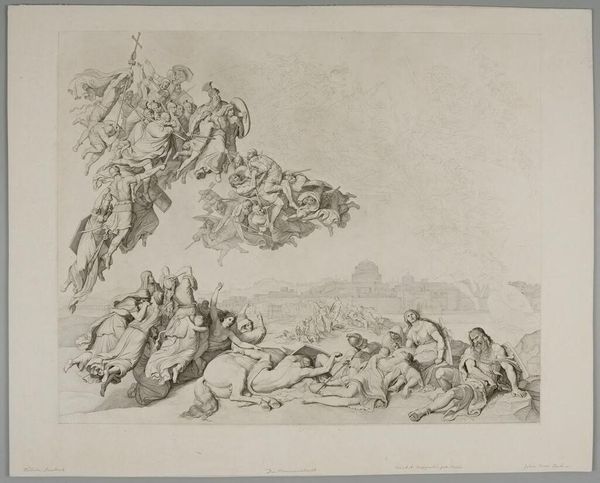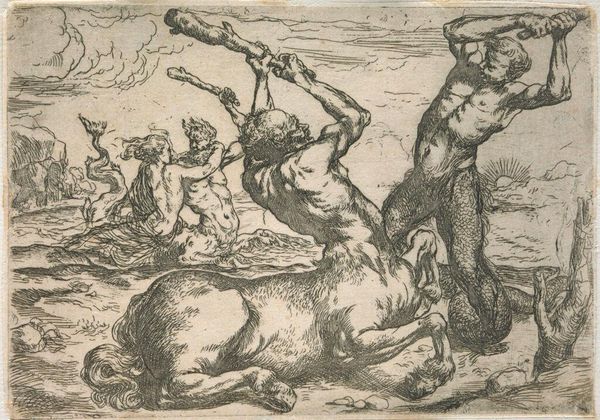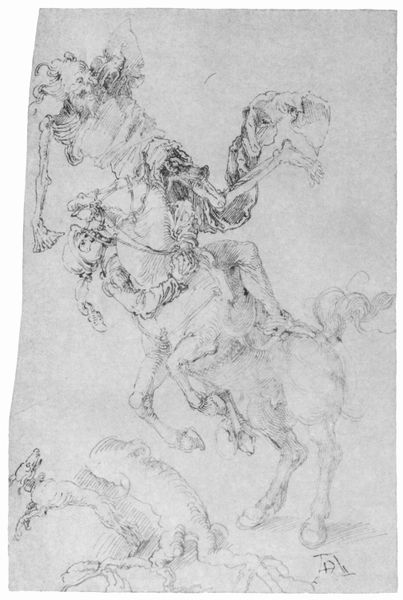
drawing, pencil
#
drawing
#
baroque
#
pencil sketch
#
figuration
#
pencil drawing
#
pencil
#
history-painting
Dimensions: 22 x 31 cm
Copyright: Public domain
Editor: So, this drawing is “The Damage of Sennaherib” by Peter Paul Rubens, from 1618, done in pencil. It’s chaotic, full of figures and horses, all rendered with such energetic lines. What strikes me most is the sense of violent movement...almost a collapse. How do you interpret this work? Curator: It's fascinating how Rubens condenses such a complex biblical narrative into a single image, isn’t it? The story comes from the Old Testament. Sennaherib, the Assyrian king, threatened Jerusalem, but an angel of the Lord brought plague upon his army. The symbolism here is quite potent. Look at the angel descending from above. Editor: Yes, there's a figure floating amidst the tumult...almost as if the energy of the whole piece is directed towards them. Curator: Exactly. And what does the downward motion, almost a swooping dive, suggest to you in terms of symbolic representation? It speaks to divine intervention. Rubens uses the angel not just as a figure, but as a signifier of a much larger, unseen force. Editor: I guess it’s like this one moment representing the entire, almost instantaneous destruction of the army? A visual shorthand. Are there other symbols I should notice? Curator: Consider the prone bodies beneath the horses. These aren't just fallen soldiers; they represent the sudden and total reversal of fortune. A powerful image carrying the weight of cultural memory - the consequences of opposing the divine. See the flag? This represents earthly powerlessness against the divine. Editor: This really deepens my understanding. It’s not just a battle scene; it's a representation of a divine power punishing arrogance. Curator: Precisely. And understanding the symbolism is key to unlocking the emotional and psychological depth of the image for Rubens.
Comments
No comments
Be the first to comment and join the conversation on the ultimate creative platform.
